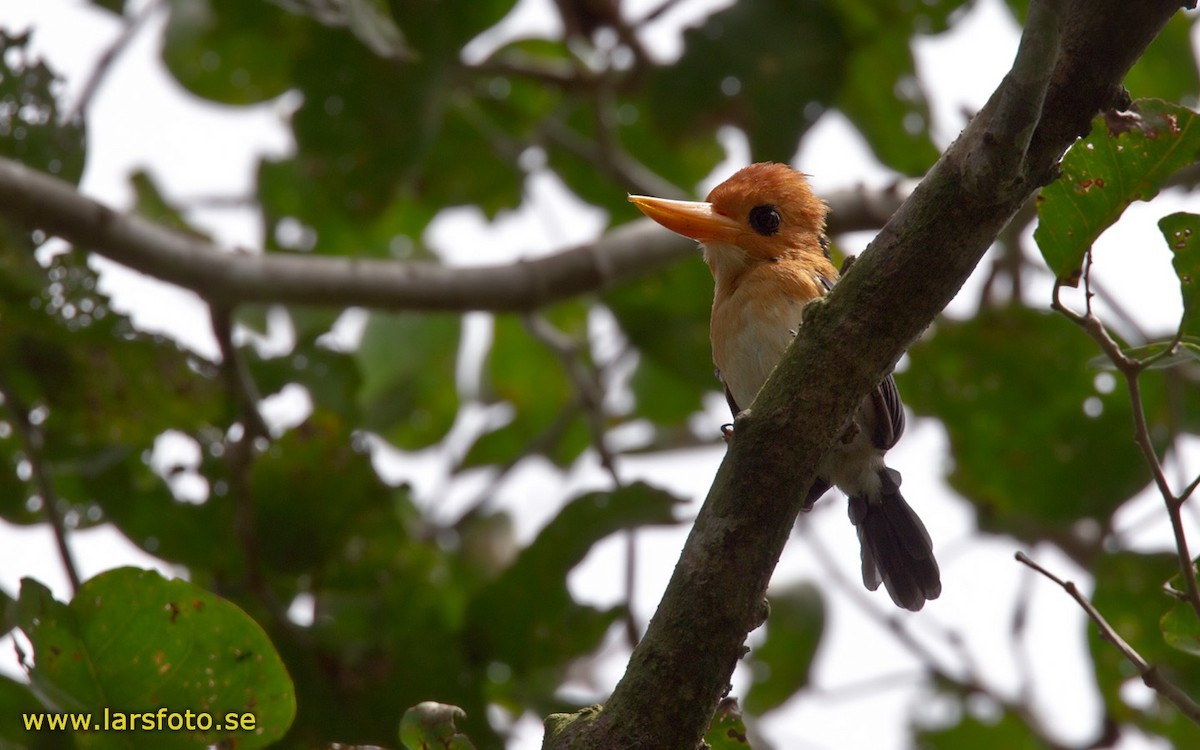Yellow-billed Kingfisher
A species of Yellow-billed Kingfishers Scientific name : Syma torotoro Genus : Yellow-billed Kingfishers
Yellow-billed Kingfisher, A species of Yellow-billed Kingfishers
Botanical name: Syma torotoro
Genus: Yellow-billed Kingfishers
Content
Description General Info
 Photo By Lars Petersson
Photo By Lars Petersson Description
The yellow-billed kingfisher is 20 cm (7.9 in) long, with a wingspan of 29 cm (11 in), and it weighs 30–50 g (1.1–1.8 oz). Its orange colouring and yellow bill are distinctive; it has an orange head and neck with a black nape patch and white throat. Adult females also have a black crown patch. The upper mantle is blackish grading to olive green on the back, blue-green on rump and with a blue tail. The upperwing is dull green-blue with dark olive-black flight feathers. The underparts are pale orange-grey. The bill is orange-yellow in adults, dark grey in juveniles. 
Size
20 cm
Nest Placement
Cavity
Feeding Habits
Yellow-billed Kingfisher feeds on large insects, earthworms, small snakes, and lizards. It exhibits a unique side-to-side sway while perched, then dives to the ground to capture prey.
Habitat
The yellow-billed Kingfisher inhabits varied forested environments across tropical regions, particularly in primary and secondary rainforests, including monsoon and mangrove variants. This bird favors the understorey and subcanopy layers of ecosystems, and it has adapted to mature plantations as well as monsoon scrub and forest clearings. It also utilizes isolated forest patches often found alongside accessible areas, like roads through forests and at forest edges.
Dite type
Carnivorous
General Info
Feeding Habits
Bird food type
Distribution Area
The yellow-billed kingfisher is widespread throughout lowland New Guinea and the adjacent islands, extending to northern Cape York Peninsula in Australia. It may be found in rainforest, monsoon forest and along forest edges. 
Species Status
With a large range and no evidence of significant decline, the conservation status of this species is assessed as being of Least Concern. 

 Photo By Lars Petersson
Photo By Lars Petersson